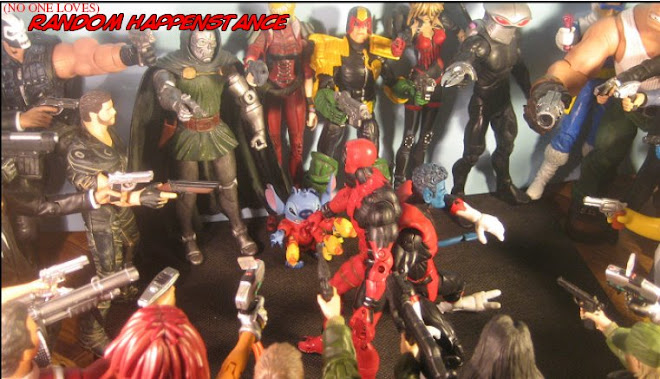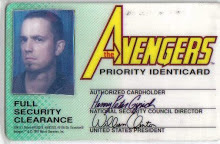

So, Cam's living a life he chooses, but it's demolishing his relationship with his girlfriend, who's on the verge of leaving him the whole series. It's also not really spelled out why he loves his work so much, since it seems to involve a good deal of him getting badly beaten. He's not out for vengeance or justice, and the money doesn't seem to be a big draw. The fights aren't the typical comic book Bif! Bam! Pow! either, so it's hard to see what thrill, if any, he's getting there. Maybe he likes the pain.
Charlie Adlard's an artist I've seen here and there--in fact, I think I just re-read Scarface: A Psychodrama this afternoon, and I remember he did a batch of X-Files and Shadowman issues too. 
The only problem (besides the series' brevity, which doubtless prevented some of the mysteries from being revealed) is that the why of that mask design and name is never given, and then they aren't tied to the premise. "Codeflesh" is a great name, but it sounds like a Vertigo book. And the bail bondsman-turned-incognito bounty hunter could be a TV pilot. The three elements don't quite gel, but maybe that's just because of the series ending.

I liked Codeflesh a lot more than the other feature, The Bod. Young Kelly Gordon arrives in Hollywood, but she's not the hot hick fresh of the bus that she appears to be. Her sister's a lawyer with a boyfriend that has a special effects workshop, where Kelly cheerfully starts working. For about twenty minutes, until she accidentally gets doused in a "hydrated resin" and other chemicals, and ends up invisible. Permanently. Later issues would drop the floating eyes and mouth shown above.
In short order, Kelly gets a sit-com, becomes hugely popular, steals her sister's boyfriend for revenge, then spirals down on from the Tonight Show with Jay Leno to Jerry Springer to Judge Judy. (Sidebar? I hate Judge Judy. Swear to god, she's a puppet.) Even though it's a fast-forward rags-to-riches-to-rags story, it's a little too fast; and the idea of even a marginal celebrity having to do Springer or Judy's shows is dumb. It feels like name-dropping, but Heebink does a good job on the likenesses. Still, this one's mostly just invisible T&A; and didn't even run all the way to the last issue. The Bod was missable, but I wouldn't mind seeing Codeflesh back.
Panels from Double Image #1-5, "Codeflesh" Written by Joe Casey, art by Charlie Adlard; "The Bod" Written by Larry Young, pencils and colors by John Heebink, inks by Walden Wong.


No comments:
Post a Comment